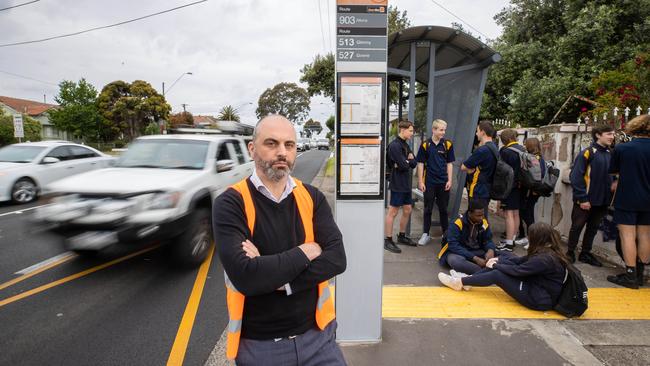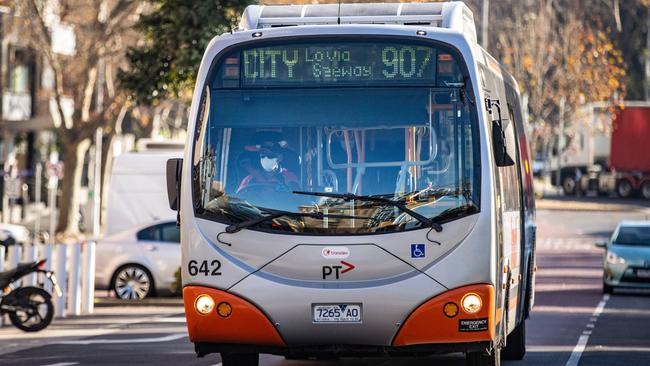Dangerous bus stops located on high-speed roads, with no pedestrian crossings nearby
An assistant principal says his greatest fear is a child getting mown down at a bus stop so dangerous that staff were forced to intervene.

Victoria
Don't miss out on the headlines from Victoria. Followed categories will be added to My News.
Bus stops are so dangerous that passengers are being forced to “dodge” high-speed traffic to catch public transport, leaving one Melbourne school warning its students of the possibility of a fatal accident.
Research from Victoria Walks has revealed 60 per cent of the state’s bus stops audited in the study are on roads with speeds between 60-80km/h and almost all of them had no pedestrian crossings nearby.
At one of the 70 stops studied, on Bell St in Melbourne’s north, motorists were using the dedicated bus lane as a rat run to speed and overtake traffic.
Coburg High School assistant principal Gary Vella said staff were rostered on at the “dangerous” bus stop to supervise waiting students.
“My biggest fear isn’t bullying or something on school grounds, it’s that I’m going to have to call a parent and say there’s been a serious car accident or fatality,” Mr Vella said.
“It’s the first thing I’ll be telling our new year 7s next year, that Bell St is very busy and there’s no coming back from a car accident.”
He said many students used the bus stop to get to class while others avoided it due to safety concerns.

Pleas for a 40km/h zone around the stop had been rejected by the Department of Transport because the school was not on Bell St.
Department head of transport services Nick Foa said the government was working with road safety partners to improve roads, including Bell St.
A proposed 40km/h speed zone near the Alva Grove intersection by the school in 2019 was found not to meet the criteria. The department instead changed the timing of traffic signals at the intersection to give pedestrians more time to cross.
The Victoria Walks report says disabled or elderly passengers were also unable to safely catch the bus, and more than a third of stops did not have ramps within 50m.
It said bus passengers were more likely to be students, casual workers earning less than $300 a week, and without a driver’s licence.
Two in five of the surveyed stops were on roads where people would have to cross several lanes of traffic, and where traffic lights were in an “inconvenient” place.
A third of bus passengers are aged 10-19, while 11 per cent are 60 or older.
Victoria Walks executive officer Ben Rossiter said a “paltry” $83 per stop was allocated from a budget of about $3m, which did not cover footpath connections or pedestrian crossings.
“Too many stops have inadequate access or missing lighting, shelter, shade, seating or footpath connections,” he said.




